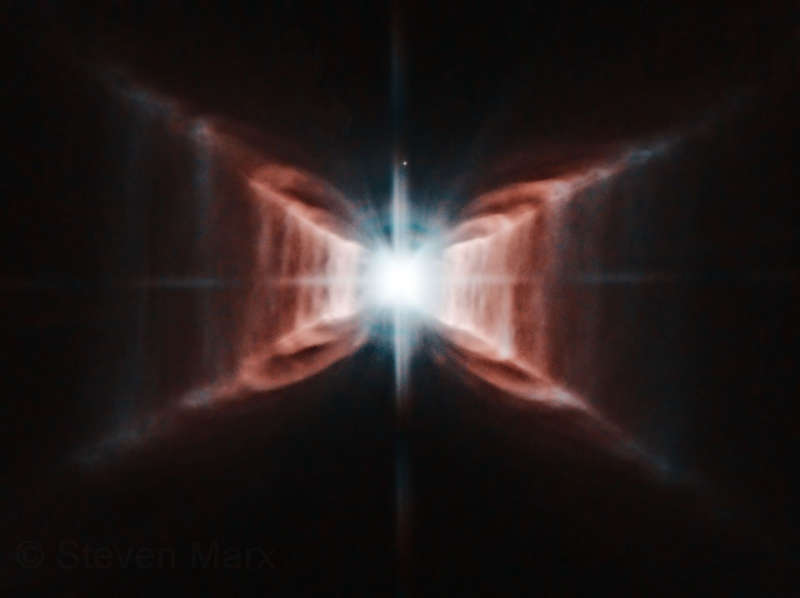The Red Rectangle Nebula from Hubble

Explanation:
How was the unusual Red Rectangle nebula created?
At the nebula's center is an aging
binary star system
that surely powers the nebula but does not, as yet, explain its colors.
The unusual shape of the
Red Rectangle
is likely due to a thick dust torus which pinches the otherwise spherical
outflow into tip-touching
cone shapes.
Because we view the torus edge-on, the boundary edges of the
cone shapes
seem to form an
X.
The
distinct rungs suggest the outflow occurs in fits and starts.
The unusual colors of the nebula are
less well understood, however, and
speculation holds that they are partly provided by
hydrocarbon molecules that may actually be
building blocks for organic life.
The Red Rectangle nebula lies about 2,300 light years away
towards
the constellation of the Unicorn (Monoceros).
The nebula is
shown above in great detail as
recently reprocessed
image from
Hubble Space Telescope.
In a few million years, as one of the central stars becomes
further depleted of nuclear fuel, the Red Rectangle nebula will likely bloom
into a
planetary nebula.
Cosmonova:
APOD editor to speak in Sweden on May 28
Authors & editors:
Robert Nemiroff
(MTU) &
Jerry Bonnell
(USRA)
NASA Web Site Statements, Warnings,
and Disclaimers
NASA Official: Jay Norris.
Specific
rights apply.
A service of:
LHEA at
NASA /
GSFC
& Michigan Tech. U.

